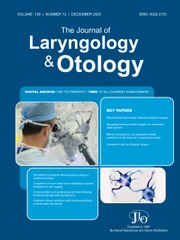No CrossRef data available.
Article contents
Investigation of vocal cord palsy aetiology: timing and relevance of imaging
Published online by Cambridge University Press: 21 October 2024
Abstract
We aimed to evaluate imaging modalities utilized in patients with vocal cord palsy (VCP) of unknown aetiology, emphasizing the significance of timing and diagnostic yield.
We conducted a retrospective review of medical records of patients diagnosed with VCP of unknown aetiology after their initial clinical examination between 2005 and 2016.
In our cohort, 46 out of 173 (27 per cent) patients were diagnosed with malignancies. All malignancies were identified during the initial imaging examination, except for one patient. Diagnostic imaging facilitated the diagnosis in 36 per cent of the patients. Computed tomography (CT) of the neck and chest and full-body positron emission tomography-CT (PET-CT) presented the highest overall diagnostic yield of 36 per cent and 35 per cent, respectively.
We recommend that patients with initial CT of the neck and upper chest or PET-CT combined with magnetic resonance imaging without pathological findings, are followed without additional imaging examinations, unless new relevant symptoms arise.
Information
- Type
- Main Article
- Information
- Copyright
- © The Author(s), 2024. Published by Cambridge University Press on behalf of J.L.O. (1984) LIMITED.
Footnotes
Bahareh Bakhshaie Philipsen takes responsibility for the integrity of the content of the paper

